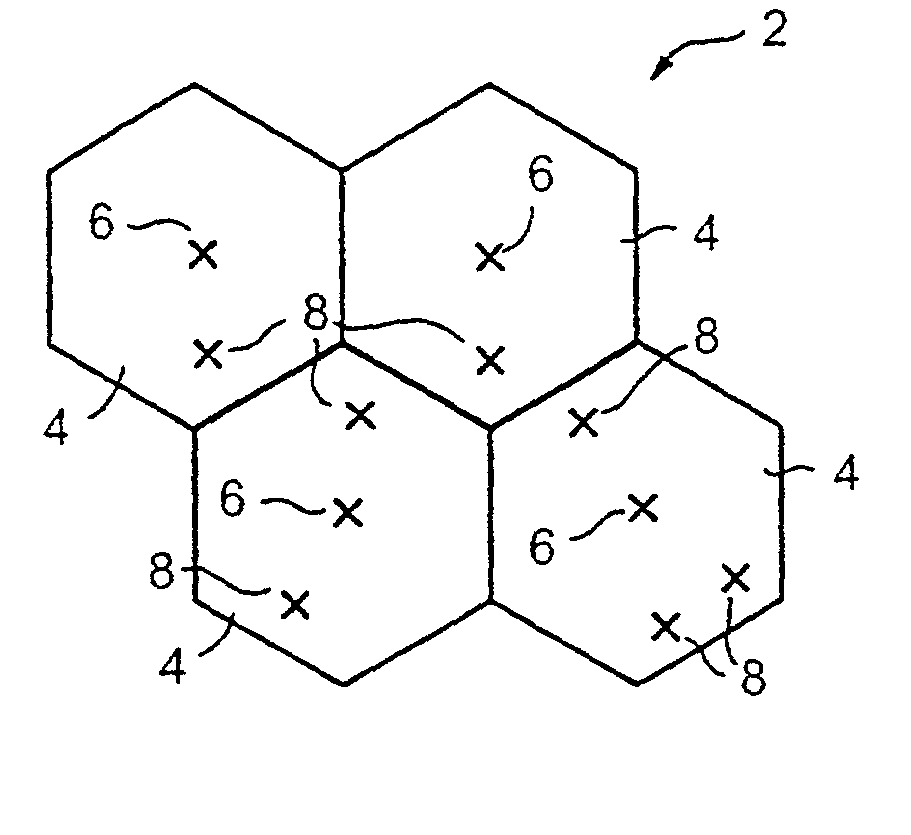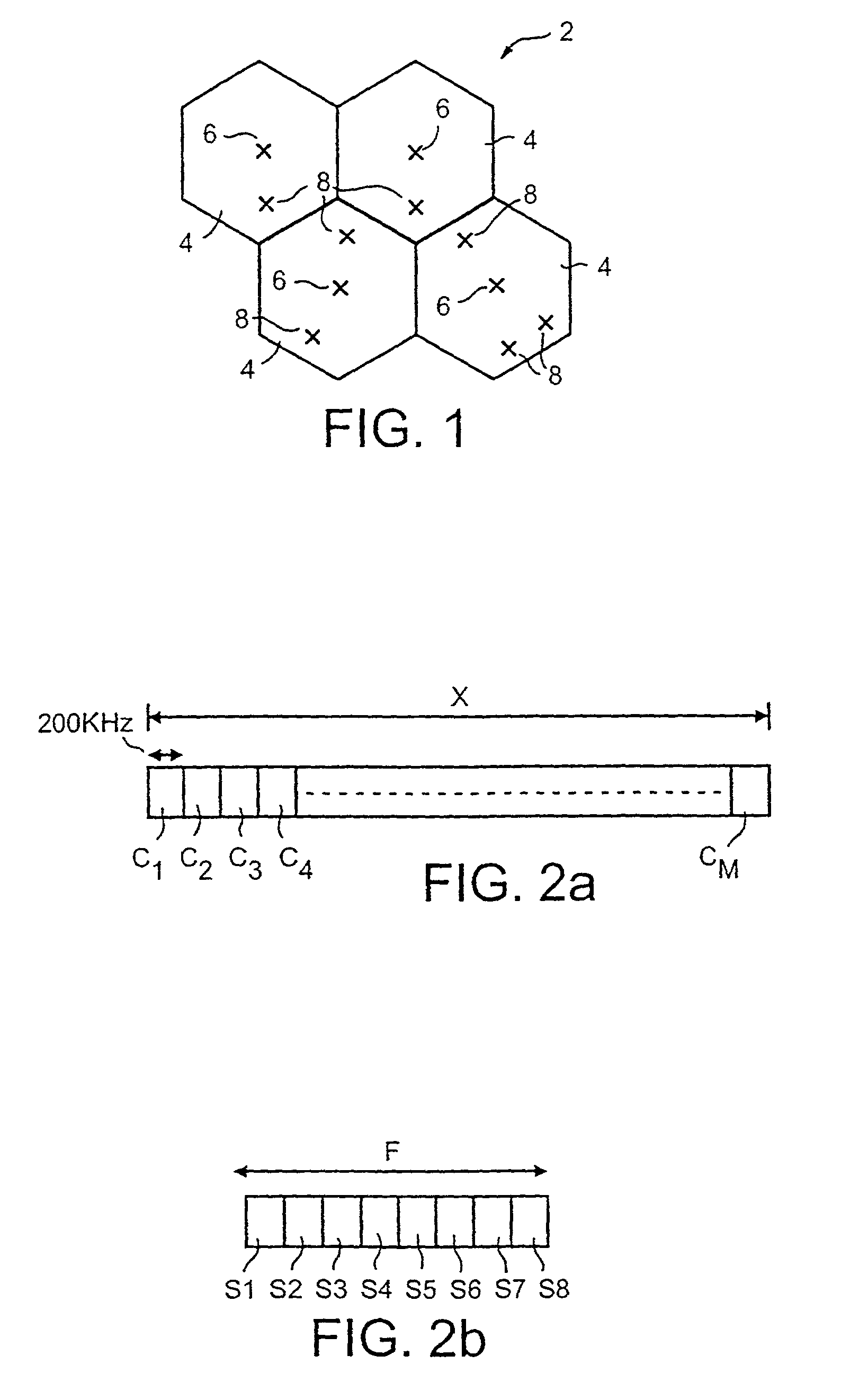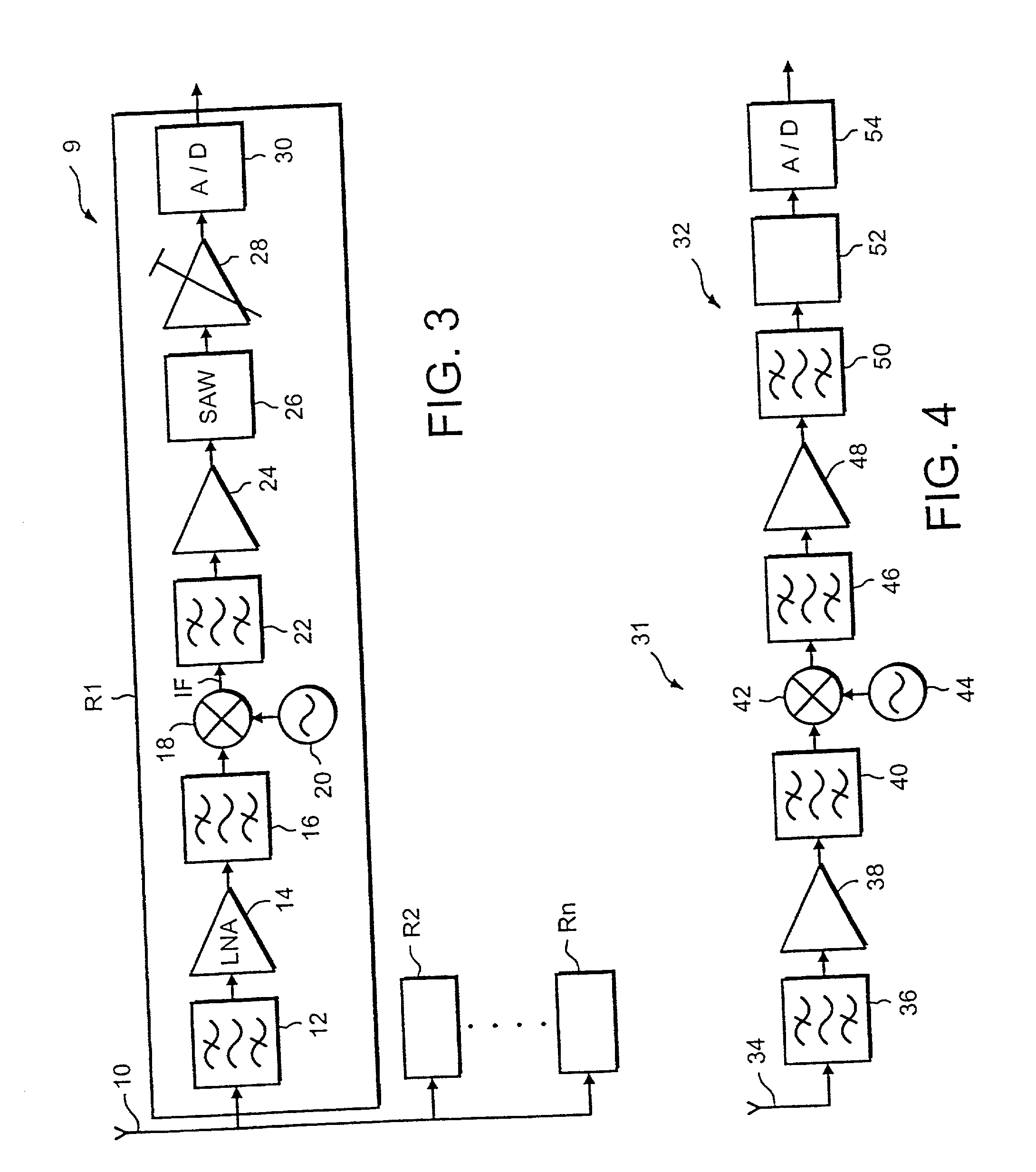Device and method for controlling the amplitude of signals
- Summary
- Abstract
- Description
- Claims
- Application Information
AI Technical Summary
Problems solved by technology
Method used
Image
Examples
Embodiment Construction
[0030] Reference will now be made to FIG. 4 which illustrates the receiver part 32 of a base transceiver station 31 embodying the present invention. Unlike the known base transceiver station, illustrated in FIG. 3, the base transceiver station 31 embodying the present invention only has a single receiver 32 which deals with all N channels to be received by the base transceiver station at the same time.
[0031] The receiving part 32 of the base transceiver station 31 comprises an antenna 34 which receives signals from the mobile stations in the cell associated with the base transceiver station. For the purposes of illustration, it will be assumed that the antenna 34 receives four channels CH1, CH2, CH3 and CH4 on frequencies F1, F2, F3 and F4 respectively. These channels are typically separated by at least 600 KHz. It should be appreciated that the base transceiver station 31 can of course receive more or less than 4 channels at the same time. For convenience, the embodiment of the pre...
PUM
 Login to View More
Login to View More Abstract
Description
Claims
Application Information
 Login to View More
Login to View More - R&D Engineer
- R&D Manager
- IP Professional
- Industry Leading Data Capabilities
- Powerful AI technology
- Patent DNA Extraction
Browse by: Latest US Patents, China's latest patents, Technical Efficacy Thesaurus, Application Domain, Technology Topic, Popular Technical Reports.
© 2024 PatSnap. All rights reserved.Legal|Privacy policy|Modern Slavery Act Transparency Statement|Sitemap|About US| Contact US: help@patsnap.com










